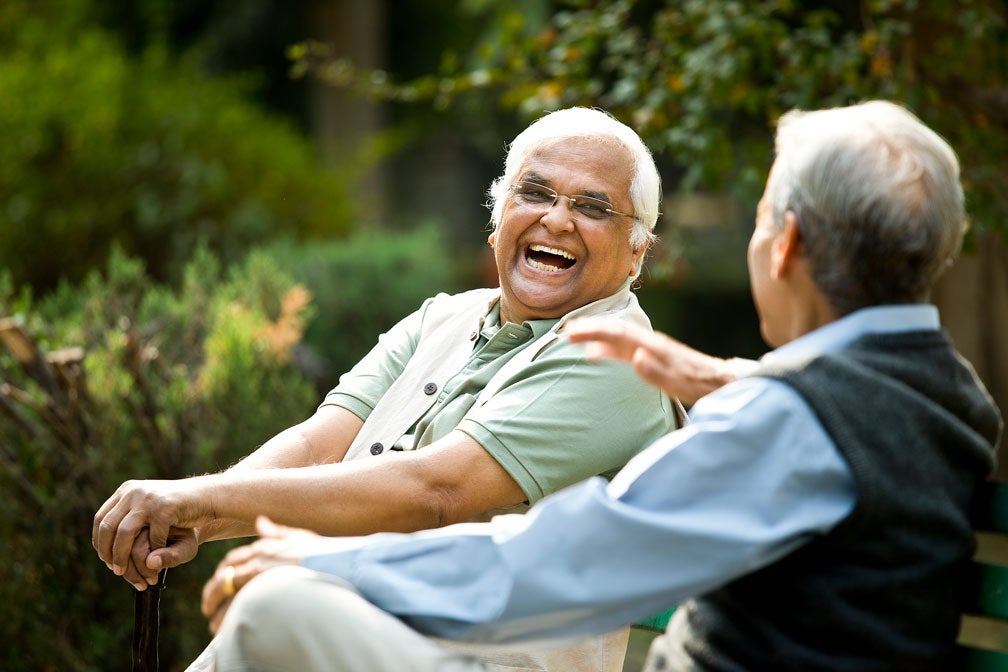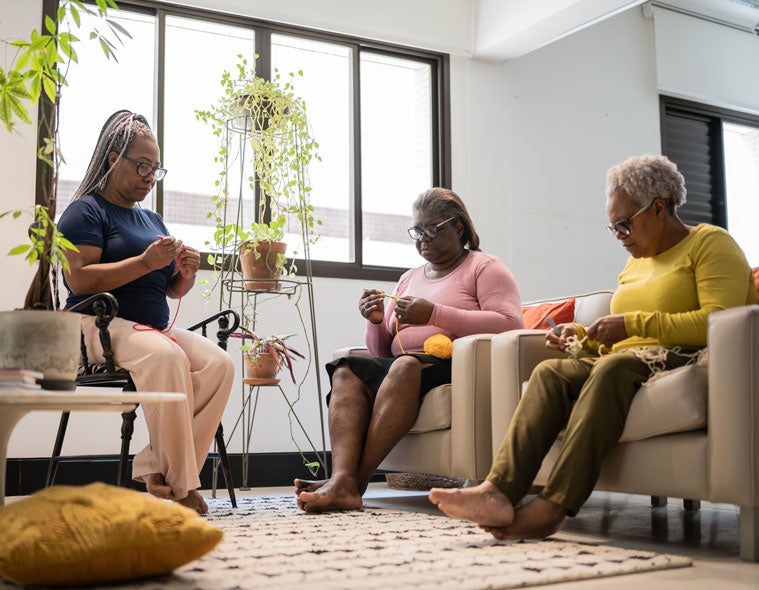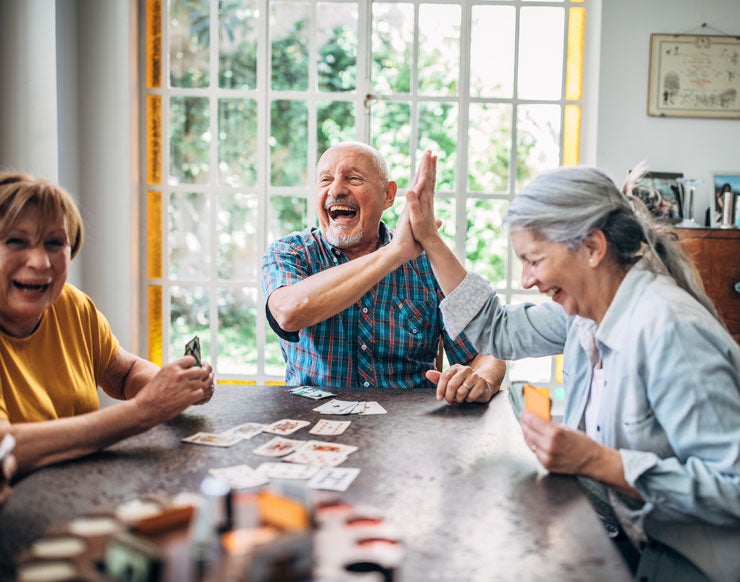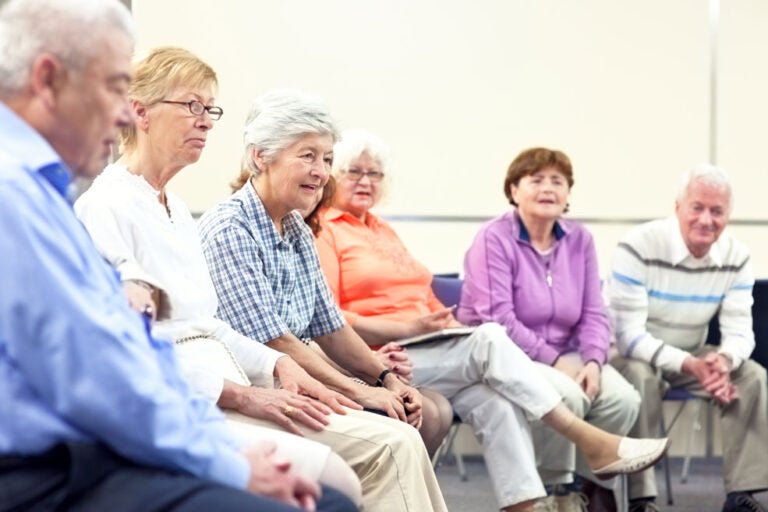It’s almost impossible to overestimate the importance of friends in retirement. For example, one study shows that older adult friendships contribute more to health than family relationships. In another, researchers learned that social isolation among men has the same impact on mortality as smoking and even more of an effect than high blood pressure.
And yet, our circle of friends often shrinks by the time we retire. Sometimes that’s because it’s harder to maintain workplace friendships after we’ve relinquished that common bond. In other cases, it’s because we—or they—relocate to enjoy a different climate or be closer to family.
While it’s important to make an effort to maintain long-time friendships no matter where you live, many retirees also want to expand their social circle with new relationships. It’s no easier to do that in retirement than in junior high, but you can make it happen with effort. Here are six ways to find new friends who suit your retirement lifestyle.
1. Make the Effort
If you think friendship will happen organically just by showing up, you’ll be disappointed, says Marisa Franco, a professor and author of the new book, “Platonic: How the Science of Attachment Can Help You Make—and Keep—Friends.” You will need to put some work into new relationships if you want them to develop. “One study looked at people who thought friendship was made based on luck and found that they were lonelier five years later than people who thought friendships were made with effort,” she says, adding “You’re going to have to put yourself out there.”

2. Go Where People Gather
Ed Zinkiewicz, a retiree and author of “Retire to Great Friendships,” says making an effort includes finding a real-world replacement for the workplace gathering spot at the coffee maker or in the break room and going there.
Become a regular at your local coffee shop, advises Cynthia Ross Tustin, who writes the I’m Thinking of Retiring blog. “You’ll soon learn who else is there every day at the same time as you. Strike up a conversation. Even if you only talk to this person at the coffee shop two or three times a week, the relationship will grow,” she says.
Inviting people to do something with you is another good way to explore friendship potential. Experiencing something together allows you to discover shared interests and learn more about each other, even if that experience is a casual meet-up at a coffee shop. “Don’t start out with, ‘Will you be my friend?’ Instead, go with the same things you did at work, such as, ‘Want to go for coffee?’” advises Zinkiewicz.
3. Reconnect With Old Friends
New friends can be rewarding but you’ll also have to do a fair amount of legwork to get to know them. Rekindling past friendships offers many of the same benefits as new friendships with the ease that comes from having a shared history.
American Psychological Association research reveals that people appreciate hearing from old friends, so why not give it a try?
“They are happier to hear from you than you might presume, and old friends are pre-vetted because there’s already some trust between you,” Franco says.

4. Ask for a Blind Date
Before dating apps, people often found romantic relationships through blind dates arranged by friends. There’s no reason you can’t apply that thinking to making new friends, too.
“Ask an existing friend if they have any newly retired friends who are looking for a fourth for golf or someone to share travel expenses with on a road trip. You’d be surprised by how well this works,” says Tustin.
5. Join a Community That Meets Regularly
Whether it’s a class or a club, building this predictable social time into your calendar will help expose you to the same group of people often enough that you’ll get to know them better.
According to sociologist and friendship researcher Rebecca Adams, we need repeated, unplanned interaction and shared vulnerability for friendships to happen. One of the best ways to build that repetition is by joining a group. “It also capitalizes on something called the mere exposure effect, which is our unconscious tendency to like people more when they are familiar to us,” says Franco.
“Go where your next friends go. If you are a reader, find a book club. If you bike or hike, find the bikers or hikers who challenge you,” says Zinkiewicz. He and his wife take fitness classes and are active church participants.
Tustin recommends connecting with potential new friends around your hobbies. Look for groups related to a favorite activity or for classes that teach how to do it. She enjoys encaustic (hot wax) painting, so she signed up for a class. “Because I have that shared hobby with the people I meet there, it’s easy to generate conversations. Everyone happily shares contact information, too,” Tustin says.

6. Express Yourself
You probably enjoy spending time with people who make you feel good about yourself and avoid those who are critical or negative. You’ll attract more friends if you remain aware of this and try to show that you enjoy their company.
“The best way to belong is to make other people feel like they belong. People report that the number one quality they look for in a friend is someone who makes them feel liked and valued,” says Franco. The inferred attraction theory, she says, states that people like people who they believe like them in return, so demonstrate that. “Greet them warmly, smile at them, bring them soup when they’re sick, check in on them,” she adds.
Finally, Franco adds, assume that you’re likable. “When researchers told people to make this assumption, they became warmer, more open, and friendlier, so it became a self-fulfilling prophecy,” she says.
Seniority is published by Finance of America Reverse LLC. The views expressed in this publication are those of the author alone and do not necessarily reflect the views and opinions of Finance of America Companies. This article is intended for general informational and educational purposes only and should not be construed as financial or tax advice. For more information about whether a reverse mortgage may be right for you, you should consult an independent financial advisor. For tax advice, please consult a tax professional.




